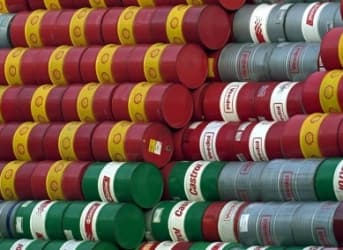There is a new drama on the oil front: those who have it in excess can’t get it to those who want it—at least not quickly enough for everyone to be happy.
A recent Reuters story reveals that tankers carrying around 200 million barrels of crude are waiting to leave or dock at ports around the world, creating “the world’s biggest traffic jam.”
One would think that producers and consumers of the world’s most abundant commodity would have had time enough to adjust their port capacities, but apparently this is not the case. Middle East ports are choking on the oil waiting to be loaded onto tankers and shipped to Asia, and Asian ports are forcing tankers to wait for weeks before unloading because their infrastructure can’t cope with these amounts of oil. Related: Saudi Arabia Steps Up Drilling Despite Downturn
Of course, there’s also floating storage, but the oil there has been on the decline since March.
Let’s pause for a second. Why would there be a traffic jam if demand is lagging behind supply? Producer ports may well be stuffed with oil, but why other ones? The answer is: China’s teapot refineries, which are gobbling up as much oil as they can get their hands on.
China last year allowed small refineries to set oil import quotas in an attempt to cope with the dire situation in the country’s energy market and unable to help the state majors – Sinopec, CNPC, and CNOOC. These smaller refineries, commonly referred to as teapots, until recently have been forced to operate in an unfavorable environment, processing whatever oil they could find. Now they have been pulled into the spotlight by low crude prices. Related: Crude Oil Higher On Pre-Doha Hopes
Chinese crude oil imports in the first quarter of the year stood at 91.1 million tons, a 13 percent annual increase. Teapots were responsible for the bulk of this increase, as they continued to take advantage of cheaper, higher-quality oil that they could process and… export.
Asia may not be booming as it was a few years ago, but oil consumption in the region is steady.
According to the International Energy Agency’s (IEA) latest Southeast Asia Energy Outlook, crude consumption in the region will grow at a compound annual rate of 1.4 percent. And that’s just Southeast Asia, not counting China and India, the latter very likely to eventually replace the former as number-two oil consumer in the world. Related: OPEC Report Suggests Massive Oil Price Rebound
Meanwhile, sellers and traders are losing money in a spectacular way. The average daily hiring rate for a tanker, according to Reuters, is $50,000. There are 125,000 tankers clogging Middle Eastern and Asian ports, and they are staying there for weeks. This makes for millions in losses incurred on what was probably initially considered a winning bet.
There are also reverberations across the whole shipping industry, just like a regular traffic jam affects the day-to-day activities of everyone in it.
Is there hope? Yes, but only if ports start upgrading their capacities to handle the increased loads, because China is on track to replace the United States as the world’s top oil importer.
Then there’s India to think about, so a capacity upgrade is really urgently needed, even if the glut starts subsiding: all medium-term stats point to an increase in oil demand, not a decline.
By Irina Slav for Oilprice.com
More Top Reads From Oilprice.com:
- Doha Is Just A Few Days Away. What Will It Mean For Oil Prices?
- The Undeniable Winners Of The Oil Bust
- IEA Sees Oil Glut Gone By 2017



















.. your. China info is rather dated...